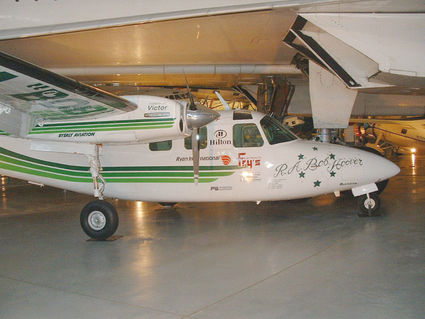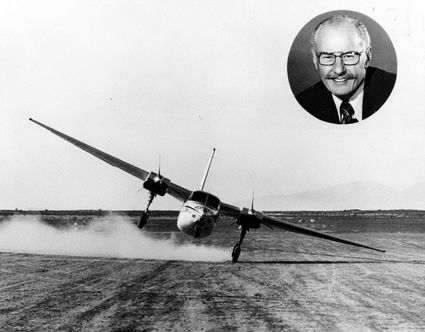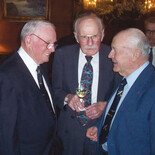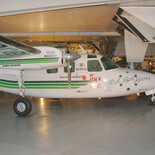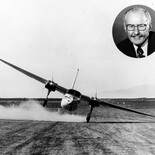Bob Hoover – A Pilot's Pilot
Short Flights
I have met so many people through the years who talk about the history of Mojave – the L.A. Aqueduct, Southern Pacific Railroad, the gold and silver mines and of course, Mojave Airport. It is always fun to share the rich history of Mojave!
I have heard comments and questions like: "I didn't know that Mojave Airport had been a Marine Corps Air Station" or "Why don't we hold the air races at Mojave Airport anymore?"
Mojave Airport was constructed by Kern County in 1935 and the dirt strip was used by aircraft that hauled the gold and silver from local mines in Mojave. In 1942, Gen. William J. Fox chose Mojave Airport to be an auxiliary flight training base for the U.S. Marines. MCAS Mojave (Marine Corps Air Station) was one of five bases for the Marines. Santa Barbara was another.
The Mojave Air Races were really fun and exciting. Dan Sabovich, visionary founder of Mojave Civilian Flight Test Center first brought air racing to the airport in 1969; the last races were flown in 1978. The flight test programs conducted at Mojave Air and Spaceport today are so complex, exclusive and proprietary that holding air races wouldn't be feasible.
While perusing some of our old Air Race programs I came across an article about a good friend to Mojave Airport and one of my favorite pilots, R.A. Bob Hoover. Described by all who love flying as a "pilot's pilot," Hoover served his country in war and peace as a fighter pilot, test pilot and master of aerobatics.
In 1937, Hoover taught himself basic aerobatic maneuvers at Berry Field in Nashville, Tennessee. He joined the Tennessee Air National Guard, which became part of the U.S. Army Air Corps in 1940. After the start of World War II, he wanted to fly in combat and was sent to Europe, flying 58 missions before being shot down. He was flying a Spitfire Mk V and was shot down by a FW-190.
When you think of the exciting things movies are made of, Hoover's WWII experiences come to mind. He spent nearly sixteen months in the Stalag Luft 1 prison in Barth Germany before escaping. He then commandeered a Focke-Wulf FW-190, one of the same aircraft that shot him down, and flew it to Holland and freedom!
I can see all of his daring escapades on the big silver screen in my mind – hope my dream comes true!
After the war, Bob continued to serve in the U.S. Air Force and was stationed at Edwards Air Force Base. In 1947, he was a chase pilot for Chuck Yeager in the Bell X-1, and was flying a P-80 when Yeager broke the sound barrier.
Hoover became a test pilot for General Motors and North American Aviation, demonstrating flight characteristics in the P-51 Mustang, F-86 Sabrejet and the T-39 Sabreliner. Jimmy Doolittle called Hoover "the greatest stick-and-rudder man who ever lived."
Hoover is remembered by millions of people as the premier air show performer in the world. He is renowned for the Energy Management Maneuver, where he shuts down both engines of his Rockwell Shrike Commander and performs a loop, eight-point roll, a 180-degree turn to a landing, then taxis in before the crowd without ever restarting the engines! Hoover has flown before more people, in more countries, in more aircraft than any other pilot in history.
Another maneuver, captured on film, demonstrated his superb pilot skills in both the Commander and the Sabreliner. At altitude, he set a glass on top of the instrument panel and poured iced tea into the glass from a pitcher in his right hand, using his left hand to completely roll the aircraft. He combined centrifugal force with smooth handling of the controls and never spilled a drop of tea!
See you on our next flight!


